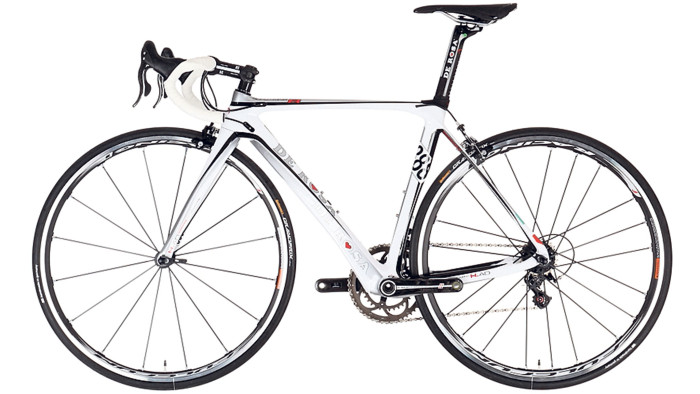Thirst for latest sports technology helps boost the benefits of exercise

Roula Khalaf, Editor of the FT, selects her favourite stories in this weekly newsletter.
With a high-grade carbon composite frame, electronic gears, a transmitter that records wheel-speed data and a profile that makes it look like a barracuda hunting for its next meal, the Giant Propel Advanced SL 0 is the kind of machine that has cycling aficionados applying for new credit cards.
And for £8,499, a bike that not so long ago was the preserve of professionals can be yours as you tackle the challenge of the weekend race or the daily commute. “We sell one of those about every five or six weeks,” says Ian Manzano of Cadence Performance, a bike shop and café in Crystal Palace, south London.
The success of athletes such as Bradley Wiggins and Victoria Pendleton has done more than spark huge interest in cycling in the UK. It has made us mad for technology. For today’s executives, cycling is the new golf – just with more opportunity to show off expensive kit.
Where spending several thousand pounds on a bike was once considered wildly extravagant, now it is all too easy.
Flick through the pages of bike magazines and you can find (as an unscientific sample): a De Rosa SuperKing for £5,349, a Genesis Zero for £4,499, a Trek Emonda for £7,800 or a Colnago C60 for £7,999.
According to the market researcher Mintel, bike sales by value rose from £639m in 2008 to £745m in 2013, while the volume of bikes sold dropped over the same period by 13 per cent to 3.2m a year – showing that cyclists are spending more money on each machine.
Much of the latest cycling technology has been pioneered in the fields of aerospace and Formula 1, where combining lightness and strength is paramount. Professional riders and engineers then experiment and adapt the technology to seek an edge, however small, over their rivals.
And it is not long before those innovations leak into the commercial market. “The latest equipment is beta-tested on the pros,” says Roly Seaton, store manager at the Cycle Surgery bike shop and repair centre on the edge of the City of London. “But it trickles down through the ranges [of high street models].”
Mr Seaton leads the way to a back room of the shop and puts a sleek, black Parlee Z3 on to a mechanic’s stand. The first thing he points out is the bike’s main material. “Carbon frame, carbon fork, carbon stem, seatpost, rail on the saddle, carbon fibre spokes,” he says, pointing to all the parts. “It all means less weight but the same strength.”
And this is just the Z3, which has been around for a few years – subsequent models have shaved a few 100 grams off the frames until they weigh well under a kilogramme.
But to cycling fanatics, carbon is old hat. With technology now widespread on the market, Ben Spurrier, head of design at Condor Cycles, says the focus is on ever greater specialisation and precision alongside the introduction of new components. This is probably why choosing the frame first and setting up the components according to the buyer’s physical type, fitness and budget is becoming so popular.
When it comes to the design of high-end carbon bikes, Mr Spurrier says, manufacturers and riders now differentiate between “aero bikes” for road racers – machines designed to cut through the air more efficiently – and bikes for riders who spend all day climbing mountains, where the emphasis is on making everything as light as possible to minimise the pull of gravity.
As for components, the refinements are never-ending. “One of the most popular developments in recent months is the use of disc brakes, especially for commuter and loaded-up touring bikes, which need all the stopping power they can get,” says Mr Spurrier. Disc brakes are mounted at the wheel hub, with pads squeezing on the disc to slow the wheel’s rotation, as opposed to clamping on to the rim of the wheel itself.
“Day after day of stopping at traffic lights and riding in the wet and the mud mean wear and tear on the traditional brake pads on the rim – and that area of the wheel itself. But a brake at the hub is more out of the way.”
But while this is fine for those with the cash, bike retailers say the biggest sellers are the £500 to £1,000 aluminium-framed bikes. This is in no small part down to the government scheme that allows tax breaks on bikes up to £1,000. “The cycle-to-work scheme has made a huge difference,” says Mr Seaton. “£1,000 gets you a really good road bike, or a hybrid and a load of safety kit.”
You can avoid paying to upgrade your groupset – the collection of components that includes gears, shifters, chain, derailleurs and cogs – by keeping them clean and well maintained.
And for about £150 you can get an expert to check your posture, technique and saddle height, which is probably a better investment than spending a few thousand pounds more to go up to the next model. And as one bike salesman wryly put it: “If you really need to lose a few kilos from your bike, it’s probably quicker and cheaper to go on a diet.”
Comments